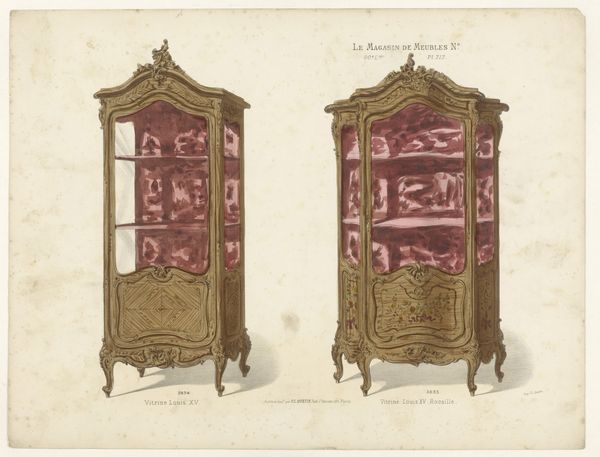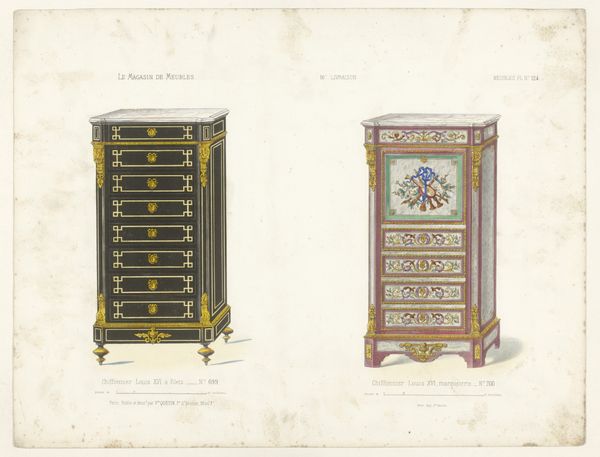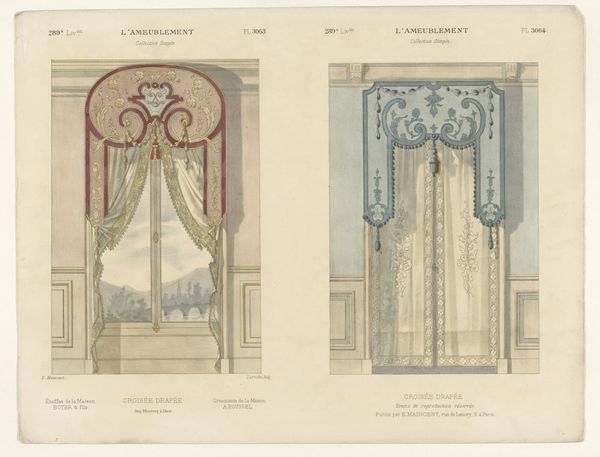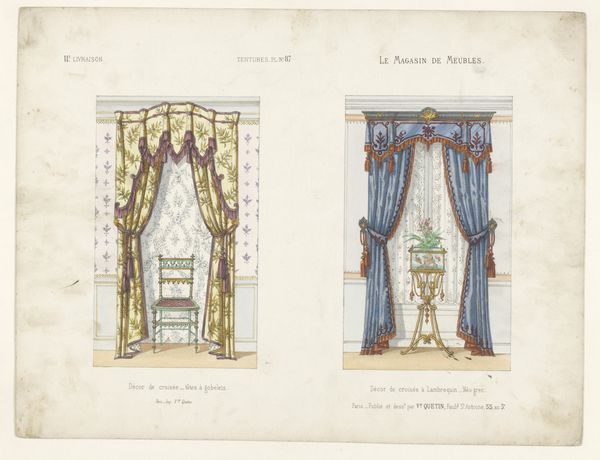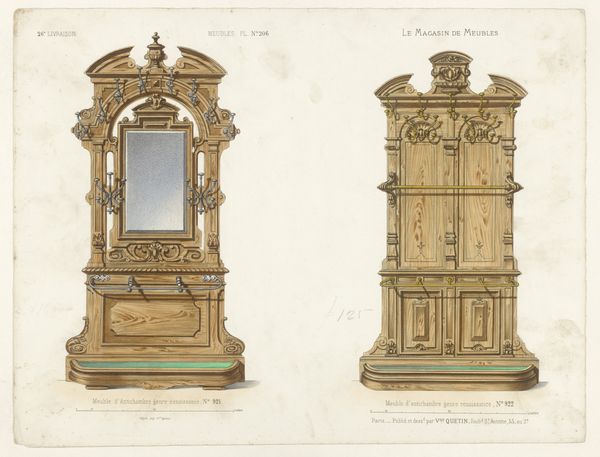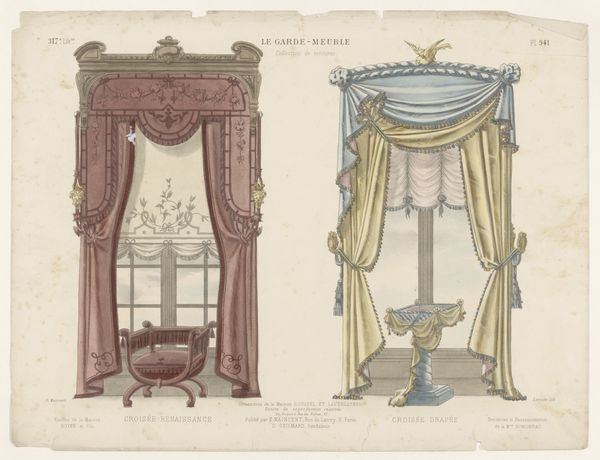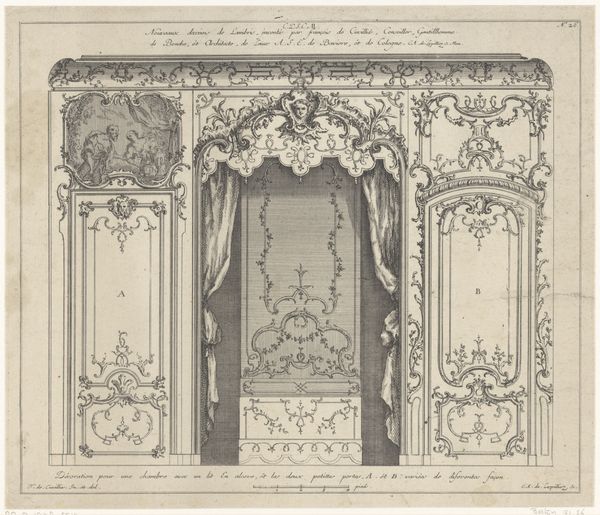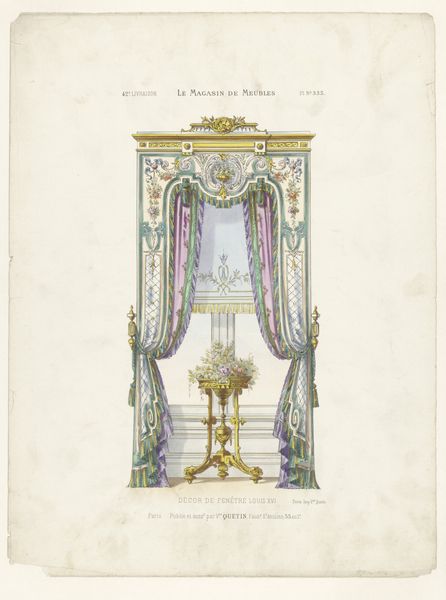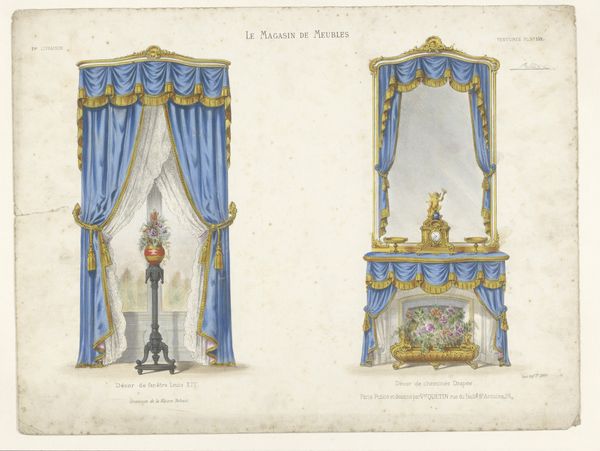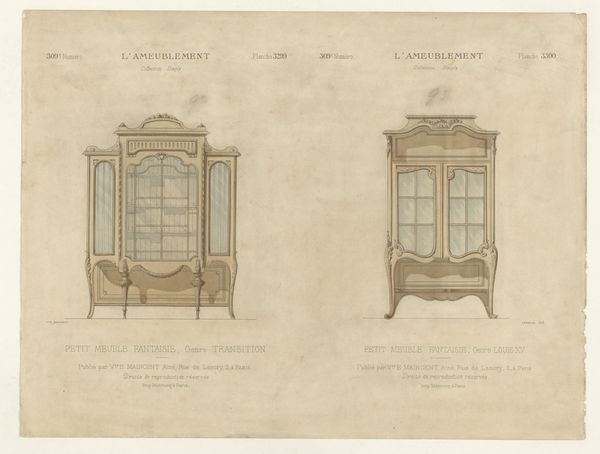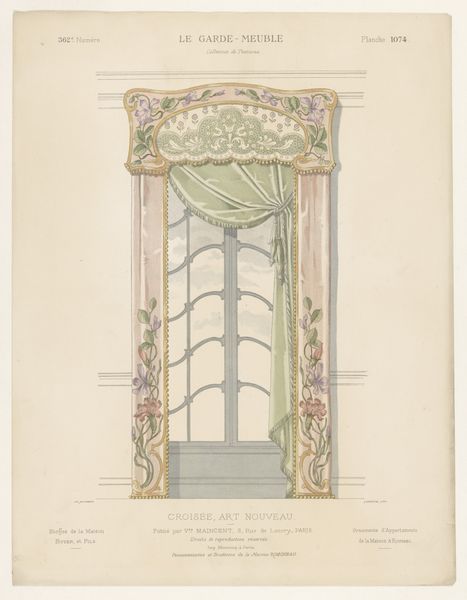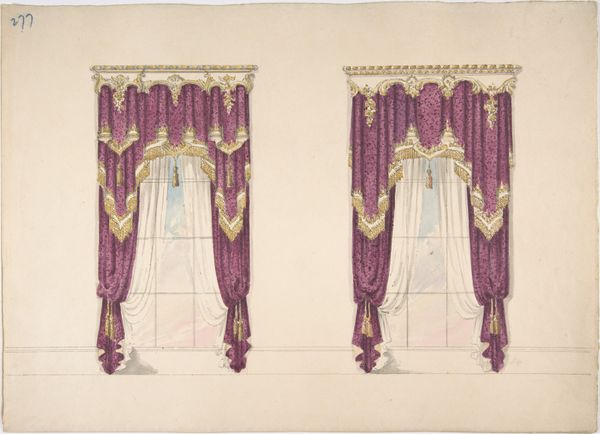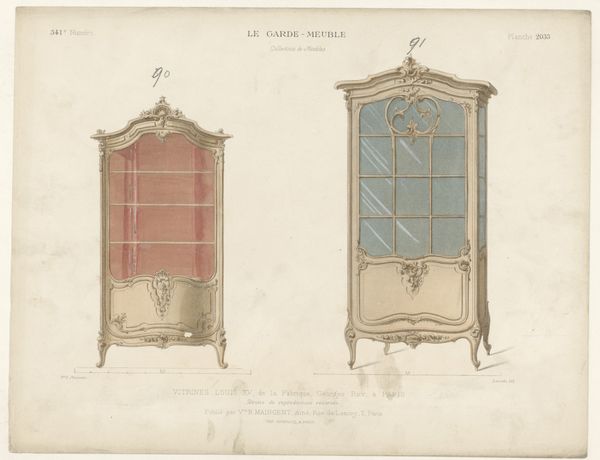
Dimensions: height 274 mm, width 359 mm
Copyright: Rijks Museum: Open Domain
Curator: Well, these two screens look interesting! It's labeled "Twee kamerschermen," which means "Two Room Screens" in Dutch. It dates to between 1832 and 1877, created by an anonymous artist using watercolor. The style appears to be Art Nouveau. Editor: Yes, the craftsmanship is striking! My initial impression is one of restrained elegance. The colors are muted, almost faded, which lends a gentle and refined character to the object, as though glimpsed in a hazy dream. Curator: Absolutely! What intrigues me is the socio-historical aspect. Room screens, even as decorative pieces, implied a certain level of societal structure and privacy. During this time period, how might owning such screens reflect a household's position within the emerging class structure? Editor: Good point. Also, examining the watercolor technique is crucial. Look at how thin the washes are, allowing the paper to show through, creating a luminous effect. There's a dialogue between the artist's hand and the materiality of the medium. How were such designs consumed and integrated into everyday life at that time? Were these for wealthy patrons? Curator: That's key. Designs like these often circulated through trade, influencing furniture makers and interior decorators, so you can imagine workshops churning out mass-produced pieces borrowing these aesthetics, democratizing it to an extent. It's all about understanding how visual culture shaped tastes and aspirations. Editor: And note how the gold detailing around the frames hints at both luxury and artifice, reflecting the expanding commercial marketplace. I wonder what kind of labor went into producing the decorative motifs. Curator: Precisely! Now, looking at the imagery, these aren't just screens but symbolic displays too. We need to see them in relation to social norms. What narratives are told through this stylized floral designs? The reception would surely vary between cultures. Editor: It speaks to me of art, design, production and its role within historical contexts; not just appreciating aesthetic quality. What a fascinating work. Curator: Agreed. Examining them beyond aesthetics enables a deeper appreciation for historical production practices and how visual culture functions.
Comments
No comments
Be the first to comment and join the conversation on the ultimate creative platform.
